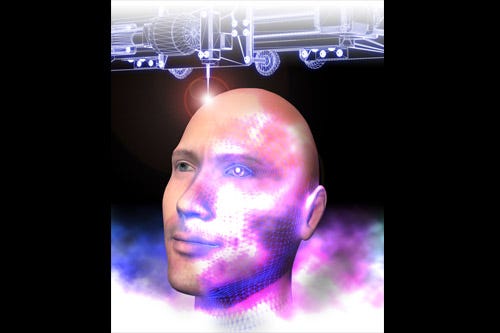June 27, 2016
British researchers think their invention could eventually enable 3-D printing of living ortho implants, using patients' own stem cells.
Chris Newmarker

University of Bristol researchers say they were able to engineer 3-D printed tissue structures including a full-size tracheal cartilage ring over five weeks, using a special bio-ink formulation created after an arduous trial and error process.
The researchers suspect the bio-ink could eventually be used to print complex tissues using a patient's own adult stem cells. The bio-ink could be used to create surgical bone or cartilage implants that could then be used in knee and hip surgeries.
"Designing the new bio-ink was extremely challenging. You need a material that is printable, strong enough to maintain its shape when immersed in nutrients, and that is not harmful to the cells. We managed to do this, but there was a lot of trial and error before we cracked the final formulation," Adam Perriman, a research fellow in cellular and molecular medicine, said in a university news release.
Printing with living cells to create human tissue has been a major medical technology goal, but has been a complex challenge to solve as researchers struggle to get cells to create complex structures. The University of Bristol innovation, then, could have some significance.
Other innovations in recent years include the work of Harvard University researchers led by Jennifer Lewis, PhD, who used a custom four-head 3-D printer and a novel ink to create a patch of tissue composed of skin cells and an extracellular matrix material that was interwoven with blood-vessel-like tubular structures.
The University of Bristol researchers' work was published in April in the journal "Advanced Healthcare Materials."
The bio-ink formulation the British researchers came up with for their two-step 3-D printing process includes two different polymer components: a natural polymer extracted from seaweed, and a sacrificial synthetic polymer used in the medical device industry. The synthetic polymer causes the bio-ink to change from liquid to solid when the temperature is raised, while the seaweed polymer offers structural support when cell nutrients are introduced.
"The special bio-ink formulation was extruded from a retrofitted benchtop 3-D printer, as a liquid that transformed to a gel at 37°C, which allowed construction of complex living 3-D architectures," Perriman says.
The University of Bristol team differentiated stem cells into osteoblasts, which secrete bone substance, and chondrocytes, which secrete the matrix of cartilage and become embedded in it, in order to engineer 3-D printed tissues.
"What was really astonishing for us was when the cell nutrients were introduced, the synthetic polymer was completely expelled from the 3-D structure, leaving only the stem cells and the natural seaweed polymer. This, in turn, created microscopic pores in the structure, which provided more effective nutrient access for the stem cells," Perriman says.
Chris Newmarker is senior editor of Qmed and MPMN. Follow him on Twitter at @newmarker.
Like what you're reading? Subscribe to our daily e-newsletter.
[Image courtesy of University of Bristol]
About the Author(s)
You May Also Like
.png?width=300&auto=webp&quality=80&disable=upscale)

